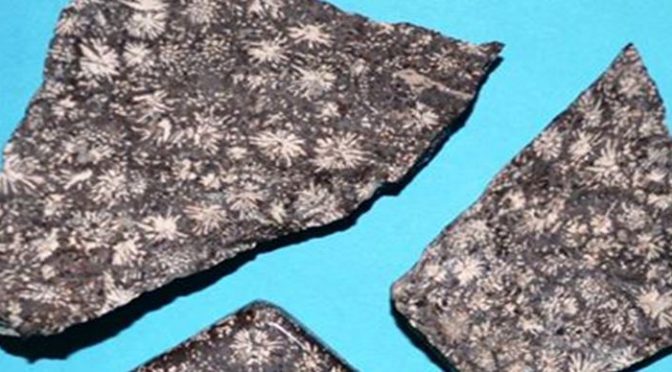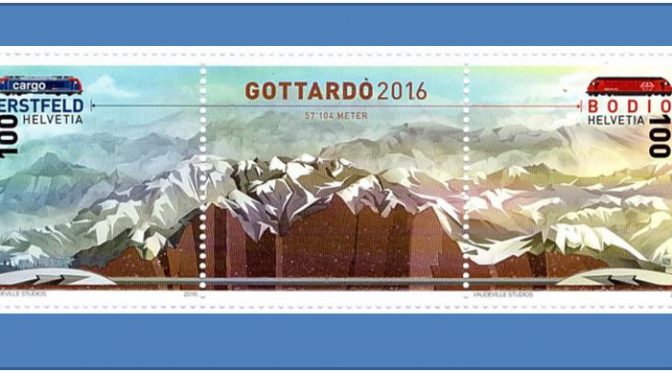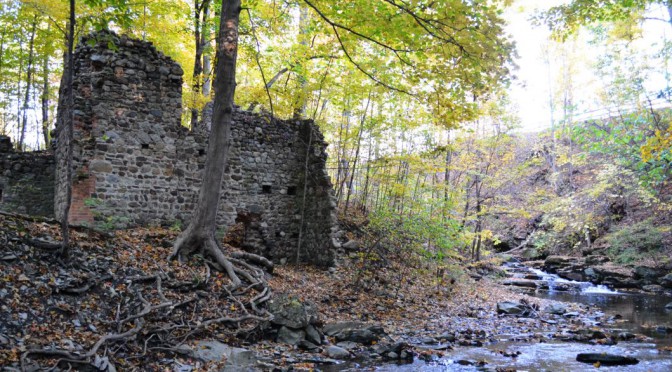Generally, when Wayne County Gem and Mineral Club packs up the buckets, hammers, passports and bug repellent to head north of the border we are after minerals in the Precambrian rocks of the Grenville Geological Province. But recently we have been able to make an annual stop in younger rocks to collect fossils in Ordovician limestones in the Eganville area of eastern Ontario. Specifically we visit the Haley Quarry in Douglas, Ontario and search the Upper Ordovician Verulam and Lindsey Formations of the Ottawa Group. We did so again this year on Wednesday July 19th.
All posts by Fred Haynes
Unakite
In late June, Wayne County Gem and Mineral Club visited St. Lawrence County. One stop on the three day field trip was at the Valentine Mine in Harrisville where the quarry/mine operators, Gouverneur Talc Co., graciously permitted us our annual visit. Naturally all were drawn to the bright blue calcite and the brilliantly white wollastonite (the site’s economic resource), but there is another interesting rock to be collected there. Bright orange and green unakite can also be found.
Music Review: Nuggets and High Grade
A music review ? Well, if you are a rockhound (and you probably are if you stumbled to my blog), and you like music (who doesn’t) then this might be just for you. With song titles like “The Crystals that I’ve Known”, “Agate Lickers”, “Gold is Where you Find it”, “The Mineral Dealer”, and Damn the Glaciers” how could you possibly not be interested in a music CD entitled “Nuggets and High Grade”?
Adirondack Garnets
Garnet mining in New York State dates back to the late 19th century when the Barton Mine first opened in 1879. Henry Barton experimented with garnet as a harder and more durable abrasive than simple sand and after a fisherman friend told him about the prolific garnets in the Adirondacks he staked his claims and went into production (Kelsey, 2015).
Basalt Porphyry “Flowerstone”
The door prizes at the June meeting of the Wayne County Gem and Mineral Club consisted of a bucket of miscellaneous unpolished slabs from the club collection. Linda Schmidtgall had scoured the club collection and accumulated a wide variety of colorful and unique pieces. She set them in water for folks to make their selection. When my number was called I picked out a unique volcanic rock slab. It was an end cut, which meant one surface was raw.
CCE Outdoor Education Day
I’d like to thank Julie Daniels for providing my name to the Seneca County 4-H Cornell Cooperative Extension for their Outdoor Education Field Day. When they called a couple months ago, it was with some trepidation that I accepted visiting with over 300 sixth graders rotating through ten 18 minute sessions at Sampson State Park on May 17th. The big yellow buses rolled in about 9:30 and by 9:48 AM the rotations began: five sessions in sequence, a 30 minute lunch period, and then five more sessions. Incredibly, the whole thing went like clockwork. Continue reading CCE Outdoor Education Day
BOOK REVIEW: Orthosilicates
What do you call chemical compounds that are comprised of isolated silica tetrahedron: that is, where the tetrahedrons do not share any corner oxygens with other tetrahedron, but rather are connected by cations in various configurations? Why, orthosilicates, of course. Olivine, garnets, zircon, staurolite, and topaz are orthosilicates, to name a few. So is titanite, one of our favorite Bancroft, Ontario minerals.
When Dr. Robert Lauf arrived at the Rochester Mineralogy Symposium in April he was carting several boxes of his newly minted book entitled “Collector’s Guide to the Silicates: Orthosilicates”. After his Friday morning talk on the topic, the line to obtain signed copies was predictably long. I got there early to secure mine, but I do believe Robert was prepared and everyone who desired a signed copy at the symposium was rewarded. Continue reading BOOK REVIEW: Orthosilicates
Blastoids in Wax, Kentucky
Published in the June, 2017 WCGMC Newsletter
In late April, six members of Wayne County Gem and Mineral Club joined a Buffalo Geological Society fossil collecting trip to the Cincinnati area led by Jerry Bastedo. We visited several productive sites, but I thought I would direct this month’s site of the month to the southernmost collecting spot we visited. Most of the trip focused on quarries and roadcuts that expose Ordovician and Silurian strata in the Cincinnati Arch. However, on Saturday, we climbed all the way up to the Mississippian by driving several hours south to a modest roadcut in Wax, Kentucky where we collected blastoids in the Glen Dean Formation.
Penfield Quarry
For one Saturday morning in May, The Dolomite Group opens its Penfield Quarry (746 Whalen Rd.) to collectors. This year that Saturday was May 6th. They asked that folks arrive before 7:00 AM to sign in, receive an official welcome, and attend a brief safety meeting. Immediately after, everyone descended to a level in the quarry that has been set aside for collecting (see photo on page 1). Hard hats (or bicycle helmets for kids) are required as is eye protection. No open toed shoes/sandals are allowed. The collecting period was from 7 AM until noon.
One Stamp or Two?
On August 21, the sun will disappear for more than 2 minutes across a wide swath of the nation and the USPS is not missing out on the action. A month prior to the eclipse and aligned with the summer solstice, a single Forever stamp will be issued to commemorate the event. The first day of issue will be in Laramie, Wyoming on June 20th.
Black Tourmaline of Pierrepont, NY
Another wonderful book on a classic New York State mineral location is available. Many of us have ventured to the Bower Powers Farm in Pierrepont to collect black tourmaline. We have driven Post Road to the washed out bridge over Leonard Brook, hiked along the brook to the tourmaline laden pits, and collected what we could carry. But did you ever want to know more about the rich history of the location, the multiple collecting sites, the varied geology, or the complete mineralogy of this classic site?
Cypripedium Orchids on Stamps
As many of my friends know, I collect stamps as well as minerals and I enjoy thematic, or so called topical stamp collecting. Naturally, my career in geology and my interest in minerals draws me to topics related to those categories. But I also enjoy hearing how others merge their interests with other topics with the joy of philately.
To most of us they are lady slippers or simply orchids. But to Paul Brach they are called Cypripedium orchids. A specific genus or orchids of which there are 58 species, each with their own color, petal shape, stamen, and sepal design. At the March 9th meeting of the Rochester Philatelic Association, Paul described all the features of these gorgeous flowers using the multitude of world-wide stamps that have been issued featuring Cypripedium orchids. In addition to demonstrating his knowledge of these colorful orchids, Paul showed us his photographic prowess at capturing them on film.
Bryozoa
Fossil collectors will travel hours and brave cold temperatures and rain for a chance to collect trilobites. Heck, we will settle for trilobite parts. Most of us will pick up a complete brachiopod and even try to identify it by Genus. Check our garages and you will find hundreds, no thousands, of solitary rugose corals such as Heliophyllum halli and probably almost as many colonial tabulates such as Favosites or Pleurodictyum corals. We’ll jump for a gastropod and drool when a orthonic (straight-backed) cephalopod pops out in outcrop or shows himself (herself?) in a stone on the beach. And need I say more than Eurypterid to get you excited? BUT, who among us loves Bryozoans enough to even take a branching colony or a fan-like species home. And if you do take one home does it end up identified and in your collection? My guess is it does not. Perhaps I can change that.
Gotthard Base Tunnel
My favorite rock hound club (Wayne County Gem and Mineral Club) loves to dig and we are always looking for new places to dig and new tools to use while digging. But there are some folks in Switzerland that we must acknowledge have done a little more digging than us while deploying more sophisticated and larger tools. In fact, they have been digging on the same project for 17 years. And in June of 2016 they completed their mission. All they had done was dig a 57 km (35 mile) railway tunnel through the Alps in south-central Switzerland: the Gotthard Base Tunnel.
All told this massive project removed 28 million tons of igneous and metamorphic rock (dominantly gneiss). That is enough rock to build a rectangular regular pyramid that is 5200’ high. Think about that! At its deepest points the Alps tower more than 2000m (6500’) above the tunnel floor.
Dinosaur Feathers
You may have heard the theories that modern birds are descendent from dinosaurs that roamed the planet in the Mesozoic Era (225-65 million years ago), like the Velociraptor depicted above. And that some of those dinosaurs, both large and small, are now purported to have had feathers. But, have you seen any of the direct evidence?
How Cool is This
A fellow member of the Rochester Philatelic Association likes to stimulate her Facebook friends by placing a theme word or phrase onto her Facebook Timeline each day and having her friends post philatelic responses. Well, one day in late January her theme was simply “my town”.
I decided to seek out postmarks from the many locations I have lived. Naturally, I started with my hometown of East Longmeadow, MA. I opened Google Image Search and simply typed: “East Longmeadow postmark”. I was rewarded with a page of image snippets some of which actually met my intended search criteria. About two rows down in the middle of the screen I saw this excellent and legible postmark atop the five cent 1964 John F. Kennedy stamp. I hit enter.
Reeder Creek: Fossil Hunting Meets History
Article was published in the February 2017 WCGMC Newsletter
Sometimes it is fun to just explore for fossils or minerals by visiting an unknown location, perhaps one with potentially appropriate geology, but not a site with documented fossils or minerals. One may not find much, but occasionally one stumbles onto something completely unexpected and equally interesting. In the fall of 2015 Stephen Mayer and I had such an experience when we decided to investigate the geology along Reeder Creek in Varick, NY.
Plumalina Plumaria
Leave it to the field trip leader of the Wayne County Gem and Mineral Club, Bill Chapman, to find something new! Well, not exactly new, but certainly unusual. Plumalina plumaria were first described by Hall (1878). Yes, they look like feathers, and one might want to classify them as ferns or plants of some sort, but the latest understanding of these rather rare fossils is that they were hydroids (Muscente and Allmon, 2013). Hydroids are a class of small predators that are related to jellyfish. Dominated by soft-body parts hydroids are not well preserved in the fossil record causing extinct species to often be labeled Incertae Sedis in many fossil lists. Incertae Sedis are extinct organisms with unknown or uncertain relation to known phyla.
The Wollastonite Group of Minerals
Published in the February 2017 WCGMC Newsletter
OK, I know, most of us have heard of the mineral wollastonite and many of us have collected it at the Valentine Mine in Harrisville, or at Rose Road in Pitcairn or Cascade Slide in the Adirondacks. You may even know that 100% of North America’s mined wollastonite comes from two quarries in New York, the aforementioned Valentine Mine and the Lewis Mine near Willsboro. If you voted in the election of 2013, you may remember Proposition #5 in which the operators of the Lewis Mine sought to trade 1500 acres of their property for 200 acres in Adirondack Park immediately adjacent to the quarries west wall.
But did you know that wollastonite is just one triclinic silicate mineral within what is known as the Wollastonite Group? These minerals are all single chain silicate minerals in which every third silicate tetrahedral is “twisted”. Calcium cations connect parallel chains in wollastonite leading the chemical formula CaSiO3. The lesser known members of this mineral group employ different elements as noted in the accompanying table.
Rocks with Faces
Rock hounds are always looking for new places to dig. Sometimes it is hard to find them. But we could tinker with that theme a bit and start “looking for new things in old places”. There is a museum in Chichibu, Japan, two hours from Tokyo that houses over 1700 rocks, all of which resemble human faces. They call the museum Chinsekikan (which means museum of curious rocks). Apparently, the owners have been accumulating the odd collection for over 50 years with the lone requirement that Mother Nature was the only artist (Strategy, 2016).





















